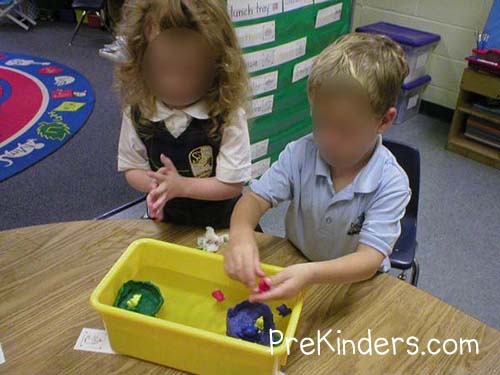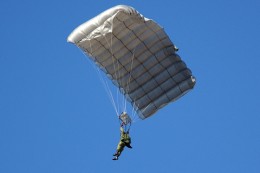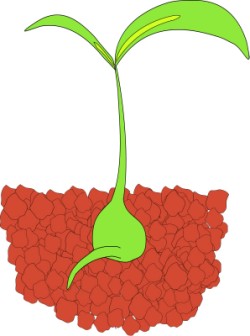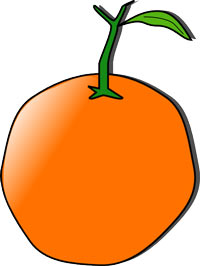
This
activity is perfect for not only pre-kindergartners, but all elementary
level students experimenting with sink and float. For this activity,
children may work individually, in partners, or even in small groups or
"teams" to create a boat out of clay or aluminum foil. Students must use
trial and error to create a boat that will float. Once their boat is
able to float, children will add plastic counters to the boat to see how
many pieces the boat can hold before sinking. This activity really
engages children's cognitive thinking and gets them fully engaged in
science. This experiment is a nice introduction to the concept of
sinking and floating for younger children, but can also be extended with
in depth discussion for older students.

This is a great experiment to introduce children in kindergarten to the scientific method. Students can explore the question how does a penguin stay warm in arctic waters to form a hypothesis, draw conclusions, and analyze data. Students will test their hypothesis by placing their hands in ice water first without and then with their hand inside a bag that simulates blubber.

Did you ever think you could make colors disappear right before your eyes? In this first grade lesson, students will learn that light plays a big factor in how we view objects, especially color. First graders will watch the colors vanish as they overlap and turn to white in this spinning science activity.

This first grade physical science lesson is sure to impress curious students. Tell your children that you are going to blow up a balloon without using
your mouth. They may look at you like you're full of baloney, but proving them wrong will be half the fun. This isn't just a cool trick, it's also
a great intro to chemistry and biology.

Earthquakes are fascinating, but no one wants to get caught in one!
Luckily, it's easy to learn about earthquakes without experiencing one
firsthand. In this simple Earth science experiment, fourth graders will observe the effect of lateral earthquake motion on a high-rise
building from the safety of your classroom. Your students will delight in
shaking the slinky "building" back and forth to simulate the motion of
an earthquake. At the end of the experiment, they'll learn about new
construction techniques that help skyscrapers resist the destructive
power of this type of movement.

Abstract science concepts, such as vast distances, are often difficult
for children to grasp. Use this kinesthetic learning activity to help
your fourth graders envision the solar system and its immense size by
creating a small scale map of the solar system—using human planets!

In this lesson students will describe the environmental impact of humans, understand that pollution is harmful to all living things, and give examples of ways we can reduce, reuse, and recycle waste. To achieve these objectives students will engage in a hands-on activity using pasta to represent waste and pollution. This lesson can be adapted for grades k-5.

Learn about air resistance while making an awesome parachute! Design one
that can fall slowly to the ground before putting it to the test,
making modifications as you go. This would be a great experiment to do with third or fourth grade.

Learn about seed germination with this fun science experiment for kids in grades pre-k through 1.
Plant some seeds and follow the growth of the seedlings as they sprout
from the soil while making sure to take proper care of them with just
the right amount of light, heat and water. Have fun growing plants with
this cool science project for children.

Does an orange float or sink when placed in water? Seems like a fairly
straight forward question, but is it? Give this fun density science
experiment for kids a try and answer the question while learning a
unique characteristic of oranges. This activity may be adapted for grades K through 4.









